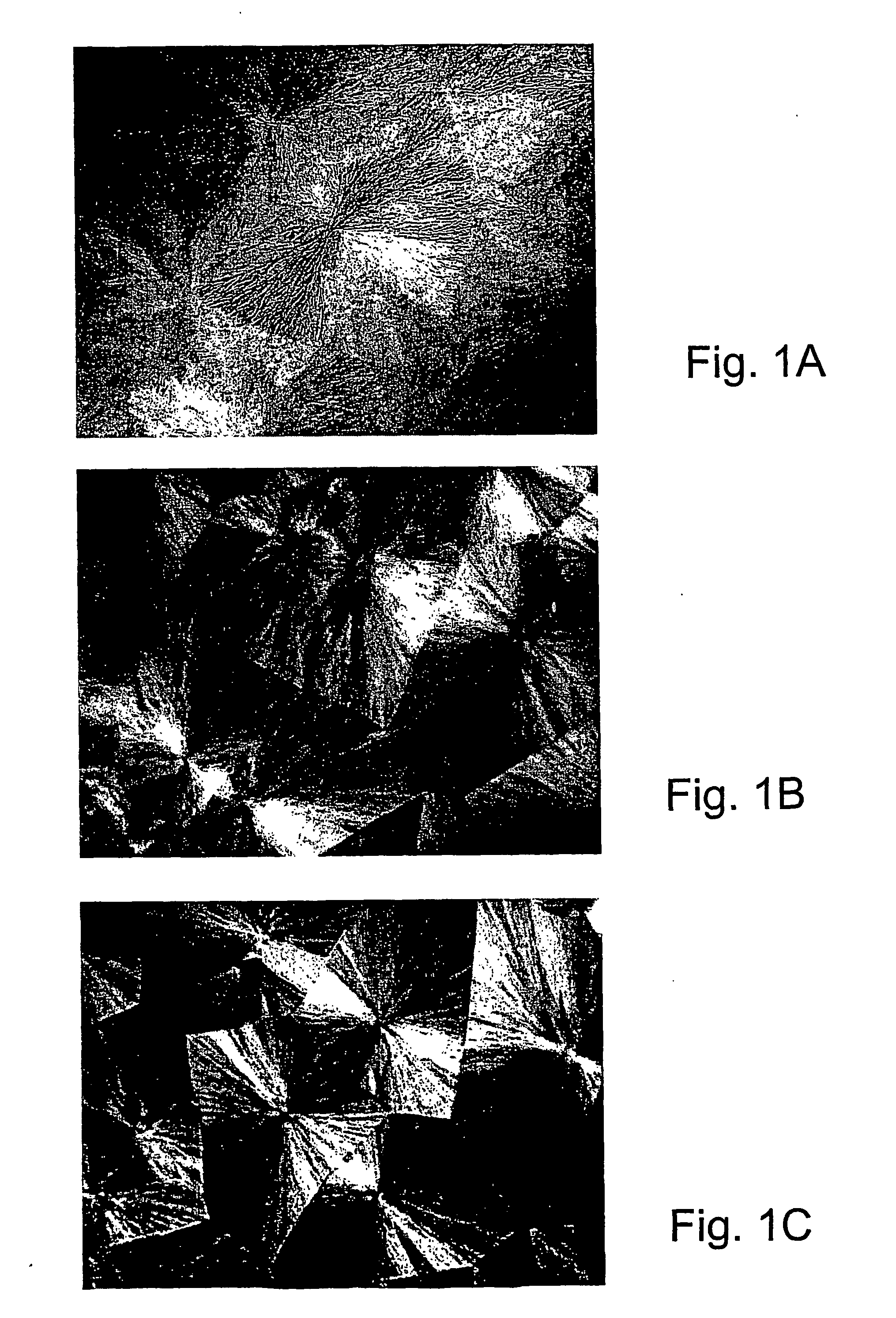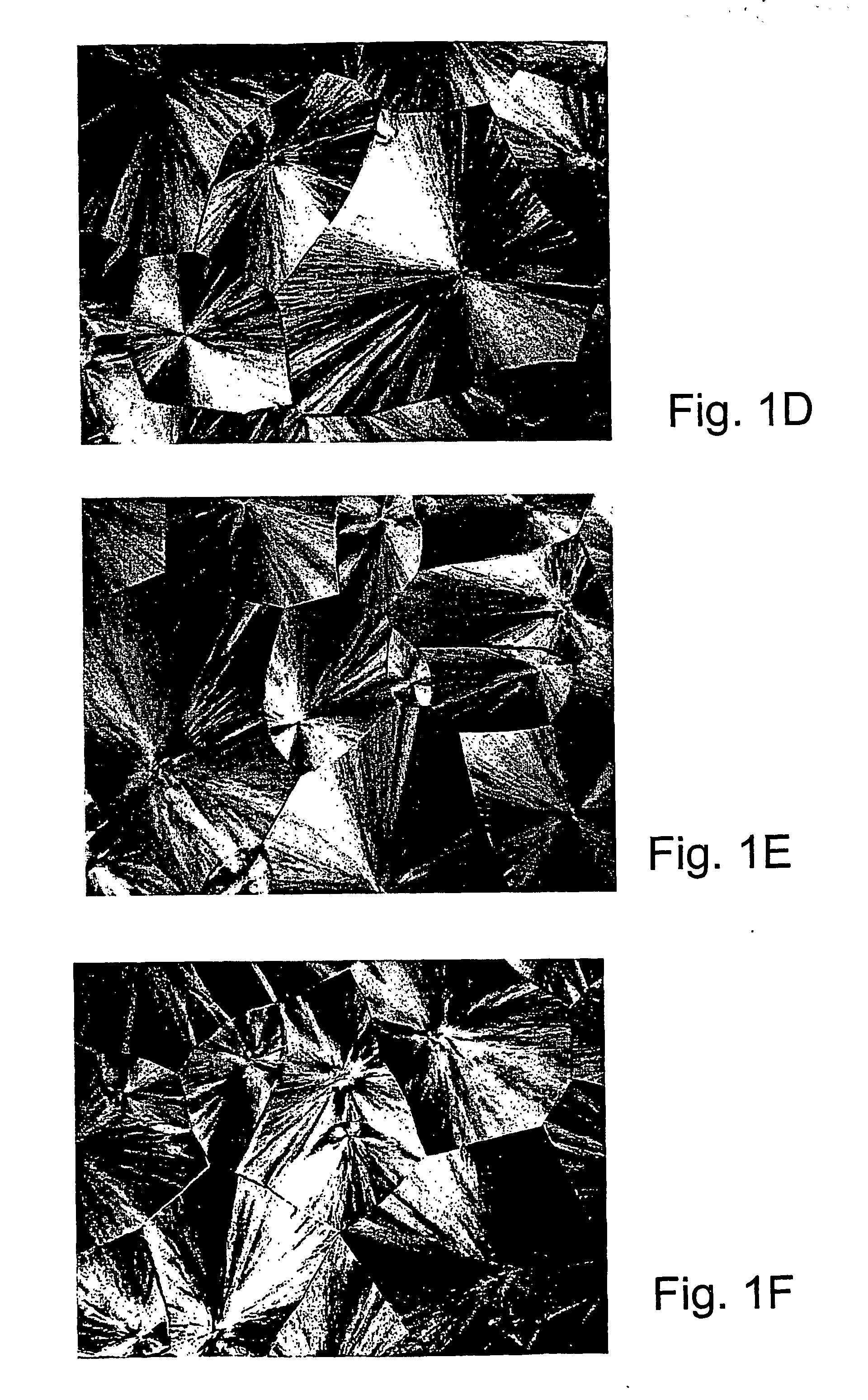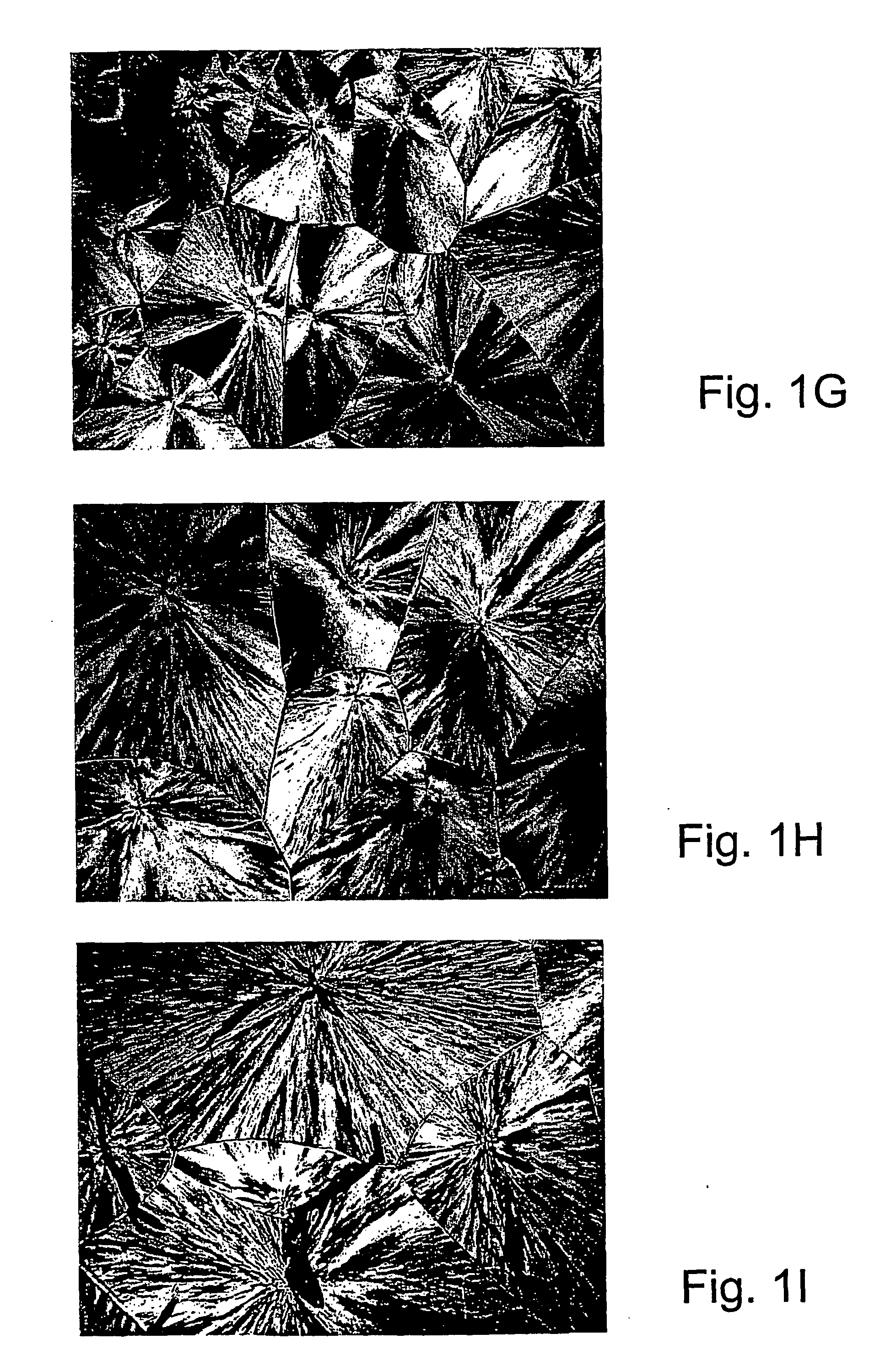Random and non-random alkylene oxide polymer alloy compositions
an alkylene oxide polymer and composition technology, applied in the field of random and non-random alkylene oxide polymer alloy compositions, can solve the problems of not being completely biocompatible or not having handling characteristics that are well suited to their intended application, bone healing, inflammation,
- Summary
- Abstract
- Description
- Claims
- Application Information
AI Technical Summary
Benefits of technology
Problems solved by technology
Method used
Image
Examples
example 1
Characterization of Polymer Compositions
[0107] Specific characterization of various embodiments can be ascertained by using various specialized techniques (e.g., high-sensitivity differential scanning calorimetry), which can be used to probe the precise nature of the alloy and the interaction between the component molecules. In particular, the miscibility may be confirmed by alterations in the glass transition temperature (Tg) of the alloy relative to the Tg of the individual components, if the Tgs of the individual components are sufficiently different. However, such measurements on polymer mixtures can be very difficult to make and interpret, even by experts in the field. If good results are obtained they are often strictly limited to the precise composition, volume fraction and temperature at which the measurement was made and, even with the best theoretical analysis, these data may have little predictive value for other combinations of polymers, even with only slight difference...
example 2
Polymer Composition for Bone Hemostasis
[0118] A preferred composition with utility as a bone hemostasis agent may be produced in the following manner: Equal quantities by weight of NF grade poloxamer 188 (PLURONIC® F68NF) and 22K random AOC are sealed in a heat-resistant glass container and heated to a temperature of 80° C. in an oven. The contents of the flask is stirred for a period of 8 hours at 80° C. The liquid composition is allowed to remain undisturbed for another 16 hours at 80° C. to allow air bubbles to escape from within the liquid. The liquid is then dispensed directly into TEFLON coated metal molds maintained at a temperature of 80° C. The molds are cooled to 4° C. for 15 minutes. The solid polymer composition is removed and placed into individual foil packets lined with a polyethylene coating. These packets are then placed into pouched appropriate for packaging sterile implantable devices. The product is sterilized using an appropriate dose of plasma radiation.
[0119...
example 3
Non-Toxicity of Polymer Composition
[0120] The biocompatibility of the composition was demonstrated by assessing intracutaneous reactivity, systemic toxicity, cytotoxicity, hemolysis, mutagenicity, and the potential for chromosomal aberration. The composition used for all tests was composed of equal quantities by weight of NF-grade poloxamer 188 (PLURONIC® F68NF) and 22K random AOC.
[0121] The composition was evaluated for intracutaneous reactivity to test for potential irritation and sensitization. A 0.2 ml dose of the material was injected by the intracutaneous route into five separate sites on the backs of rabbits, along with controls. Observations for erythema and edema were conducted at 24, 48, and 72 hours after injection showed no evidence of irritation. The primary irritation index characterization for the composition was negligible.
[0122] The composition was evaluated for systemic toxicity in accordance to the guidelines of the United States Pharmacopoeia and the Internati...
PUM
| Property | Measurement | Unit |
|---|---|---|
| Temperature | aaaaa | aaaaa |
| Size | aaaaa | aaaaa |
| Size | aaaaa | aaaaa |
Abstract
Description
Claims
Application Information
 Login to View More
Login to View More - R&D
- Intellectual Property
- Life Sciences
- Materials
- Tech Scout
- Unparalleled Data Quality
- Higher Quality Content
- 60% Fewer Hallucinations
Browse by: Latest US Patents, China's latest patents, Technical Efficacy Thesaurus, Application Domain, Technology Topic, Popular Technical Reports.
© 2025 PatSnap. All rights reserved.Legal|Privacy policy|Modern Slavery Act Transparency Statement|Sitemap|About US| Contact US: help@patsnap.com



